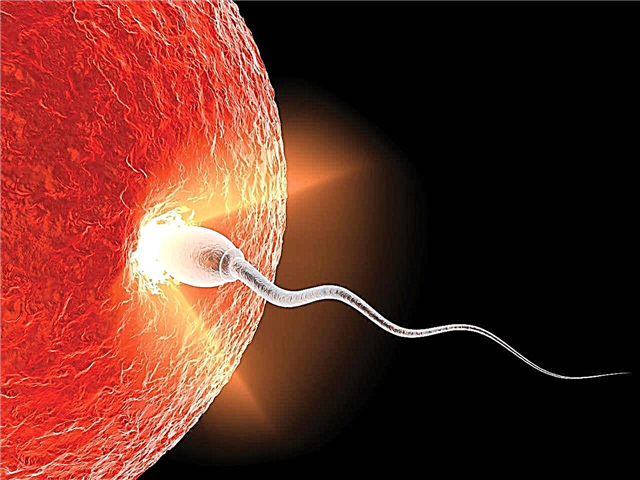Is the baby pooping normally? This doubt is very common among parents, since during the first year of life, the baby undergoes significant changes in its diet: from breastfeeding to a varied diet, including solid foods. For these reasons, baby feces can have a different appearance and consistency.

Baby defecates
Important! Parents need to remember that feces can alert them if something goes wrong, so it is important to know the outward signs of normal feces at every stage of a child's growing up.
The main signs of normal feces
The amount of feces excreted depends on the baby's diet, experts believe that it should not be enough. It is assumed that the norm is 5-6 bowel movements per day, but in some children the number of bowel movements reaches 8-10, and this is also a variant of the norm.
In addition to quantity, stool consistency is important. It differs in a month-old baby and a six-month old. At first, the consistency is more liquid, then it begins to thicken. The presence of impurities, for example, white lumps, is considered the norm. This is undigested milk, the presence of which in the stool may indicate overfeeding. In babies receiving complementary foods, undigested fiber residues can also be in the feces in the form of inclusions.
The last sign by which feces are assessed is their color, which can be from yellow-green to dark brown, depending on the type of food and the age of the baby.
Differences in feces with natural and artificial feeding
The excrement of an infant exclusively on HB will have:
- Color from golden yellow to greenish and brownish, depending on what mom eats;
- Semi-liquid consistency, usually contains lumps. In the feces, mucous filaments can be seen, which usually scares parents. When there are few of them, this is within the normal range;
- The smell of feces is very light, slightly sour.

Baby suckles
Important! The frequency of bowel movements is individual and may depend on the mother's diet. Some babies defecate after each feeding, others once every 1 to 2 days.
Feces of infants receiving artificial feeding differ significantly:
- the color will be darker: brown or greenish yellow;
- the smell is more pronounced;
- the consistency is denser (with artificial mixtures more waste is formed, in contrast to breast milk, which is almost completely absorbed);
- the number of times a day when the child defecates is less.
Important! Bottle-fed babies are much more likely to be constipated.

Feeding with artificial formula
When switching to artificial feeding, will the feces change
If the baby first sucked only the breast, then it became necessary to feed him from a bottle, then his bowel movements will also change. At first, they usually turn green, this does not last long - for about 10 days. Then they become the same as with artificial feeding.
If you have to mix breastfeeding and bottle feeding, the appearance of feces is unpredictable. Some babies continue to defecate as before, even though they are consuming several servings of formula a day. However, more often, with mixed feeding, the excrement of a baby who drinks only one bottle of the mixture per day undergoes dramatic changes. According to their characteristics, they become close to feces formed when feeding only with adapted mixtures, and the frequency of bowel movements decreases.
Normal fecal changes from birth to one year
As the baby grows and various changes in nutrition, his excrement acquires different external signs.
Normal varieties of stool color:
- The stool is greenish-black in color and viscous. This is the baby's first excrement called meconium. It consists of skin cells, amniotic fluid, mucus and other substances that are ingested by the fetus before birth. It stands out in the first 48-72 hours after birth;
- Light green or yellow. This is the color of the feces of a child in the first months of life, the basis of nutrition for which is milk;
- Greenish with a muted sheen. This shade may indicate a high intake of low-calorie breast milk. Such milk is the first to come from the mother's breast; at the end, more nutritious milk begins to be released. Therefore, it is recommended to empty the breast completely at each feeding;
- Brown, yellowish-brown, or greenish-brown, pasty stools are most common in formula-fed babies;
- Brown or dark brown stool of a uniform consistency is the most common excrement in children starting to eat solid foods.

Introduction of complementary foods to babies
Causes of the appearance of hard feces
While it is normal for babies to have a bowel movement several times a day, some babies only have a bowel movement every 2 days. In this case, the consistency of feces is normal, and its amount is greater than with frequent bowel movements. This phenomenon is known as false constipation and is often seen in babies under 6 months old who are breastfed. Mother's milk in these children is absorbed almost completely in the intestines, without generating waste.
A sign of constipation can be hard stool in a newborn, when the process of bowel movement causes discomfort to the baby. This can be a temporary event or last long enough. There are various reasons that can affect the appearance of dense stools in babies:
- Improper diet of a nursing mother. Her consumption of foods that can cause hard stools in a newborn;

The diet of a nursing mother
- The baby is not eating enough milk. At the same time, in addition to thick poop in a baby, you can see that the baby is not gaining weight well;
- When the mother tries to combine the milk expressed from the breast with tea or water, the baby will not receive enough nutrients. Accordingly, less waste will be generated. The same is observed with excess water intake by an infant;
Important! Up to six months of age, the time of the introduction of complementary foods, babies on HB do not need additional liquid.
- Switching to artificial feeding can cause thick stools in babies. There is a possibility of the same when changing the brand of the adapted mixture;
- When introducing complementary foods, digestive disorders are possible, including the appearance of hard feces in infants;
- The natural reason why feces become thicker is the gradual maturation of the digestive system as the infant grows older.
Do I need to see a doctor
There are many reasons for a thick stool in a newborn that do not require medical intervention. Therefore, mothers should not panic, but carefully observe the condition of the baby.
The well-known doctor Komarovsky adheres to the same opinion. If the baby is gaining weight, does not feel discomfort, his bowel movement is painless, and with a careful analysis of the events preceding the appearance of thick feces, the mother notices that the milk formula has recently been replaced or used for the first time, complementary foods have been introduced, then a visit to the doctor is not necessary.
If constipation continues for a long time, accompanied by painful sensations, the baby sleeps restlessly, and blood appears in the feces, then you will need to consult a doctor to exclude the development of pathologies. You may need to take a stool test and prescribe medications to alleviate the child's condition.
Preventive measures
Breast milk has many benefits, in particular, it contains lactose, which makes it easier to remove feces from the baby's body. As the diet changes, the amount of lactose decreases, and the stool becomes more compact and difficult to remove. In addition, if the baby's diet includes foods with a low fiber content and little fluid, the likelihood of hard stools in the baby increases dramatically.
What to do to reduce the risk of solid feces:
- Nursing mothers should include in their diet more fruits (plums, pears, figs) and vegetables (beets), refrain from eating flour, fatty and fried foods, nuts;
- When a child under one year old begins to consume cereals (for example, oatmeal), his feces become more compact, solid and acquire an unpleasant odor. If the crumbs have solid feces, then it is better not to feed it with rice groats and try to include fruits and vegetables in the diet. Zucchini, pear, plum have a good effect on intestinal peristalsis;

The child is fed with porridge
- If a baby using adapted mixtures has thick stools, it is recommended to change their brand, and also use fermented milk mixtures;
- Infants receiving complementary foods must drink clean water;
- Good preventive measures include encouraging the baby's physical activity, doing exercises (cycling, alternating raising and lowering the legs), and massaging the tummy in a circular motion.
Changing stool patterns in the first year of life is normal, depending on food intake and other factors. Parents need to keep track of these changes, but their concern should not be overwhelming.



